Posts Tagged ‘reviews’
Sunday, July 10th, 2022
“The idea of the extraordinary happening in the context of the ordinary is what’s fascinating to me.” – Chris van Allsburg
Picture books by Chris van Allsburg are not only beautifully illustrated, the stories are wide open for wide interpretation, which makes them ideal for children. It’s impossible to look at the pictures in Harris Burdick without imagining a story. My other surreal favourites are Bad Day at Riverbend, about a black and white cowboy town attacked by colourful crayons – and The Wretched Stone, about a strange glowing stone which makes the people regress intellectually (TV and digital screens perhaps?).
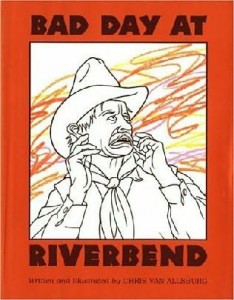
Tags: books, children's books, picture books, reviews
Posted in Book Reviews, Children's Books | No Comments »
Sunday, August 8th, 2021
The Little Prince (1943) by Antoine de Saint-Exupéry is a fable about a pilot who crashes in the desert and meets a wise child. It’s one of the world’s most translated books (in 250 languages) and it has parhaps the most intriguing sentence in all of children’s literature:
What is essential is invisible to the eyes.
What is ‘essential’? Is it truth, love, spirit, mystery? These are the questions the story evokes. Saint-Exupéry was a pilot who also wrote great adventure books (eg. Wind, Sand and Stars ).
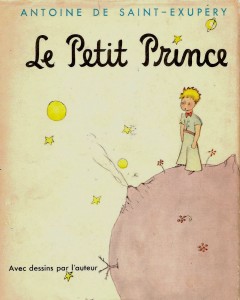
Tags: children's books, consciousness, reviews
Posted in Book Reviews, Children's Books | No Comments »
Thursday, March 11th, 2021
Fiction should be both canny and uncanny. – Flannery O’Connor
One of my favourite short stories is Flannery O’Connor’s A Good Man Is Hard To Find – it certainly has a powerful ending. Her stories can be dark but there’s always a redemptive thread in them. O’Connor wrote despite the pain of lupus which ended her life at the age of 39. Here are some of her thoughts about the writing process (from Mystery and Manners):
If you want to write well and live well at the same time, you’d better arrange to inherit money.
When I sit down to write, a monstrous reader looms up who sits down beside me and continually mutters, ‘I don’t get it, I don’t see it, I don’t want it.’
Fiction is about everything human and we are made of dust, and if you scorn getting dusty, then you shouldn’t write fiction.
There’s a certain grain of stupidity that the fiction writer can hardly do without and this is the quality of having to stare, of not getting to the point at once.
The artist uses her reason to discover an answering reason in everything she sees.
The writer has to judge himself with a stranger’s eye and a stranger’s severity.
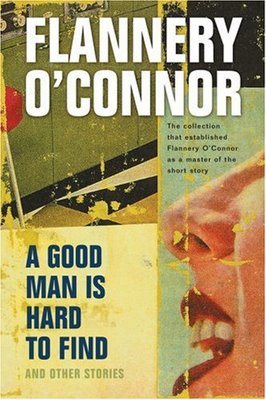
Tags: books, reviews, writers
Posted in Book Reviews, Writing | No Comments »
Sunday, July 26th, 2020
When truly present in nature, we use all our senses at the same time, which is the optimum state of learning. ― Richard Louv, The Nature Principle
Direct exposure to the natural world is essential for healthy childhood development. Forest schools are springing up all over the world to give children outdoor experiences. I’m a trustee for a new Nature School (in Dunedin, New Zealand) which combines creative play with skill-teaching (bushcraft, beekeeping etc).
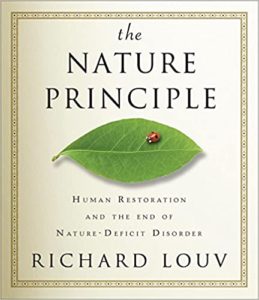
Tags: books, connections, reviews
Posted in Book Reviews | No Comments »
Saturday, February 1st, 2020
There is only one time that is important: Now. – Tolstoy
The wisdom in Tolstoy’s Twenty-Three Tales (1903) always inspires me. These classic folk tales include: How Much Land Does a Man Need? (very little, it turns out); The Three Questions (eg. What should I do with my time?); and A Grain as Big as a Hen’s Egg (the power of organic gardening).
Photo (1908): Tolstoy aged 80
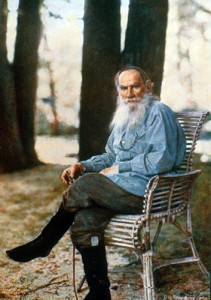
Tags: books, reviews, short stories, Tolstoy
Posted in Book Reviews | No Comments »
Saturday, November 30th, 2019
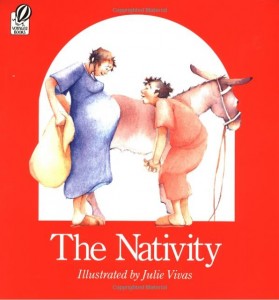 The Nativity, illustrated by Julie Vivas, is my favourite children’s Christmas book. The pictures convey the humanity of the story by showing the love between Mary and Joseph, the pregnancy and birth, within a rustic setting. Oddly, it all sits well with the poetic language of the 17th century King James version of the Bible. Vivas also illustrated the wonderful book for babies, I Went Walking.
The Nativity, illustrated by Julie Vivas, is my favourite children’s Christmas book. The pictures convey the humanity of the story by showing the love between Mary and Joseph, the pregnancy and birth, within a rustic setting. Oddly, it all sits well with the poetic language of the 17th century King James version of the Bible. Vivas also illustrated the wonderful book for babies, I Went Walking.
Tags: children's books, picture books, reviews
Posted in Book Reviews, Children's Books | No Comments »
Saturday, August 3rd, 2019
Twenty-Three Tales by Tolstoy
There is only one time that is important – Now! It is the most important time because it is the only time when we have any power.
Moominpappa at Sea by Tove Jansson
Moominpappa had no idea what to do with himself, because it seemed everything there was to be done had already been done.
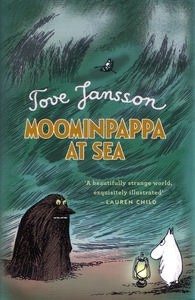
The Wisdom of Insecurity by Alan Watts
If the universe is meaningless, so is the statement that it is so.
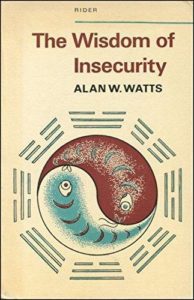
Right Ho, Jeeves by P.G. Wodehouse
I wouldn’t have said off-hand that I had a subconscious mind, but I suppose I must without knowing it, and no doubt it was there, sweating away diligently at the old stand, all the while the corporeal Wooster was getting his eight hours.
The Golden Apples of the Sun by Ray Bradbury
And pluck till time and times are done
The silver apples of the moon,
The golden apples of the sun.
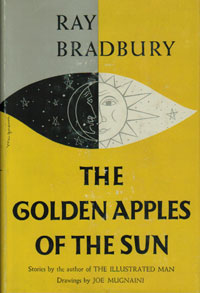
Tags: books, Ray Bradbury, reviews, Tolstoy
Posted in Book Reviews, Reading | 2 Comments »
Friday, March 1st, 2019
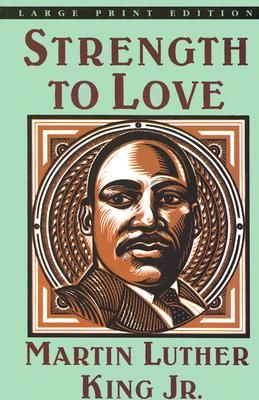 Martin Luther King Jr.’s, Strength To Love, was written during the Civil Rights struggle in the early 1960s. King’s stirring style was aimed at a live church audience and you can almost hear the “Amens” after some sentences. Many of his political statements were censored by the publisher at the time, but almost 60 years later his words remain powerful and relevant. King encourages people to be forgiving, non-violent, non-conformists; and to confront militarism and inequality in society.
Martin Luther King Jr.’s, Strength To Love, was written during the Civil Rights struggle in the early 1960s. King’s stirring style was aimed at a live church audience and you can almost hear the “Amens” after some sentences. Many of his political statements were censored by the publisher at the time, but almost 60 years later his words remain powerful and relevant. King encourages people to be forgiving, non-violent, non-conformists; and to confront militarism and inequality in society.
Our scientific power has outrun our spiritual power. We have learned to fly the air like birds and swim the sea like fish, but we have not learned the simple art of living together.
Expenditures for defence have risen to mountainous proportions. The nations have believed that greater armaments will cast out fear, but they have produced greater fear.
Through non-violent resistance we shall be able to oppose the unjust system and at the same time love the perpetrators of the system. Hate cannot drive out hate, only love can do that.
Capitalism must undergo continual change if our great national wealth is to be more equitably distributed.
All life is interrelated. I can never be what I ought to be until you are what you ought to be.
Tags: martin luther king, Peace, people power, political change, reviews
Posted in Book Reviews, Peace | 1 Comment »
Saturday, August 4th, 2018
Iona and Peter Opie were like the Brothers’ Grimm of the 1950s. Their fabulous book was The Lore and Language of Schoolchildren, an epic collection of children’s rhymes, riddles, superstitions, jeers, and customs, garnered from interviews with thousands of English children in the 1950s. Many of these rhymes and tricks persist in the playground today. Here are some gems from the Opie’s collection:
Pinch-me, Punch-me, and Steponmytoes,
Went down to the river to swim,
Two of the three were drowned,
Who do you think was saved?
Old Mr Kelly,
Had a pimple on his belly;
His wife cut it off,
It tasted like jelly.
When the war is over Hitler will be dead,
He hopes to go to heaven with a crown upon his head.
But the Lord said, No! You’ll have to go below,
There’s only room for Churchill, so cheery, cheery oh.
God made the bees
The bees make the honey;
We do the work,
The teacher gets the money.
Scab and matter custard,
Green snot pies,
Dead dog’s giblets
Dead cat’s eyes.
Hard boiled snails, Spread it thick
Wash it down with a cup of cold sick!
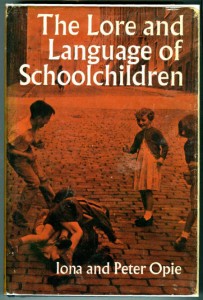
Tags: books, Grimm, poetry, reviews
Posted in Book Reviews, Children's Books | No Comments »
Sunday, July 8th, 2018
It’s really, really heartbreaking. But for some reason you want to read it again and again. It’s an extraordinary love story.– Michael Morpurgo
Almost every Sunday morning as a child I’d listen to Oscar Wilde’s short story, The Happy Prince (1888), on the radio and cry into my pillow so my brother nearby wouldn’t hear. A statue being stripped of his gold to feed the poor seems an unlikely plot for children. I didn’t understand all of Wilde’s lyrical language back then but the story shaped my values concerning wealth, poverty, and authority figures:
“The living always think that gold can make them happy.”
Listen to that radio version read by Robert Morley.
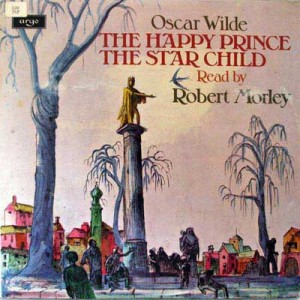
Tags: books, children's books, oscar wilde, reviews
Posted in Book Reviews, Children's Books | No Comments »
Saturday, June 9th, 2018
That touch of reality in a child’s life is a child’s comfort. The child gets the sense that this person who wrote this book knows about me and knows the world can be a troubling, incomprehensible place. Maurice Sendak
Outside Over There is my favourite Maurice Sendak picture book – – nobody else combined the real and the unreal so well. It’s a tale of separation and siblings (that features a creepy ice baby) and is both haunting and comforting. 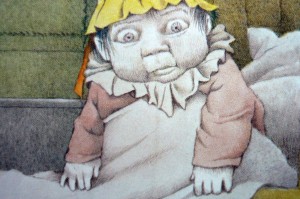
Sendak’s books can be exuberant (In the Night Kitchen), spiritual (Dear Mili), and funny (Pierre, a cautionary tale). I like his vision of atoms dancing to form molecules from the first book he illustrated (when 19 years old), Atomics for the Millions:
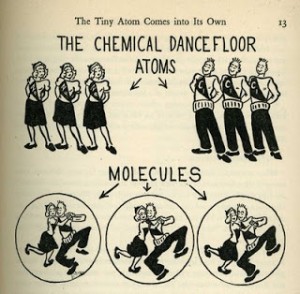
Tags: books, children's books, picture books, reviews
Posted in Book Reviews, Children's Books, Writing | 1 Comment »
Tuesday, August 1st, 2017
Jane Goodall’s memoir, Reason For Hope, is certainly that – her life in an inspiration in difficult times. The book covers her childhood in WW2; her studies of chimpanzees which revolutionised biology; and her development work via the Goodall Institute. The writing is honest and poetic, and I like the way she integrates science with her beliefs (which embrace several traditions). Here’s a link to an interview with Jane Goodall; and quotes from the book:
Each one of us matters, has a role to play, and makes a difference.
We either agree with Macbeth that life is nothing more than a ‘tale told by an idiot’, a purposeless emergence of life-forms…or we believe that, as Teilhard de Chardin put it, ‘There is something afoot in the universe, something that looks like gestation and birth.’
Yes, my child, go out into the world; walk slow
And silent, comprehending all, and by and by
Your soul, the Universe, will know
Itself: the Eternal I.
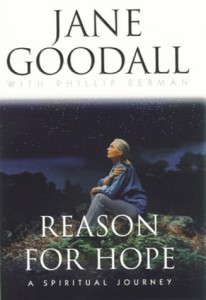
Tags: reviews, science
Posted in Book Reviews, Science | No Comments »
Friday, December 16th, 2016
Would it be possible to find a more ungrateful boy, or one with less heart than I have! – Pinocchio
Pinocchio by Carlo Collodi (1882) is a rare thing: an archetypal story for children. The puppet-boy represents every disobedient, lazy child who must face life’s hardships, find parental love and grow up. It can also be read as a Christian allegory, a snapshot of society or as a myth. The language of this classic has barely dated. The best recent version is illustrated by Roberto Innocenti, capturing all the pathos of the tale – his iconic artwork combines painterly detail with cinematic angles. This dark, humourous adventure is a far cry from the sanitized (but beautiful!) Disney movie version.
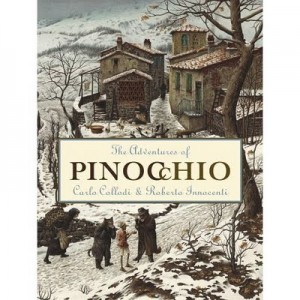
Tags: children's books, picture books, reviews
Posted in Book Reviews, Children's Books | No Comments »
Monday, May 9th, 2016
Gecko Press‘ latest picture book is that rare beast, a message book that also entertains – it’s also artfully designed with eight blank pages and sixty characters! In Don’t Cross the Line by Isabel Minhó Martins, an army general orders a guard to keep the right-hand page of the book blank. But a crowd of people build up on the border, desperately wanting to use the space. What can the guard do? People power succeeds in the end. It’s those eight blank pages that will speak to all ages about freedom: children see an empty space and want to play in it; teenagers ask why it’s forbidden; and adults see the injustice in it. A wonderful concept with lively illustrations by Bernardo Carvalho. (Read about Peace books for children here)
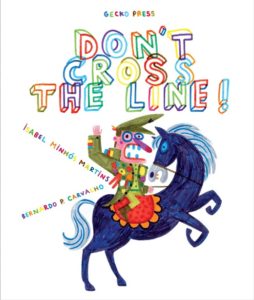
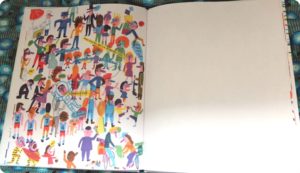
Tags: children's books, non-violence, people power, picture books, political change, reviews
Posted in Book Reviews, Peace | No Comments »
Saturday, March 19th, 2016
William Steig, (creator of Shrek) has been called ‘one of the finest cartoonists and creators of children’s books’ (Jonathan Cott). He began writing for children at 60 and his stories are often uncompromising but always celebrate the richness of relationships and nature. Steig used sophisticated language to entertain readers rather than befuddle them. 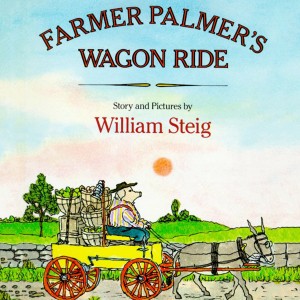
The picture book Farmer Palmer’s Wagon Ride is one of his most playful. A farmer-pig suffers a series of slapstick mishaps as he takes gifts home to his beloved family. I love his description of a rainstorm:
‘Harum-scarum gusts of wind … a drubbing deluge … thunder rambled and rumbled … it dramberamberoomed!’
Read the full article about William Steig and his books.
Tags: children's books, picture books, reviews, steig
Posted in Book Reviews, Children's Books, Humour | No Comments »
Sunday, January 3rd, 2016
The Thirteen Clocks, by James Thurber, is 60 years old and retains its brilliance. I can still recall whole sentences from when it was read to me as a child. This fairy tale parody, about a prince who performs impossible tasks to save a princess, uses every trick in the English language, including invented words ( ‘squtch’ and ‘zickering’). Look for the Ronald Searle illustrated version which has a bonus story, The Wonderful O, about a pirate who tries to ban the letter ‘o’. Here are some choice Thurber sentences:
Thorns grew thick and thicker in a ticking thicket of bickering crickets.
Time is for dragonflies and angels. The former live too little and the latter live too long.
A peasant in a purple smock stalked the smoking furrows, sowing seeds.
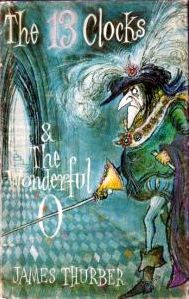
Tags: children's books, humour, reviews
Posted in Book Reviews, Children's Books, Humour | No Comments »
Thursday, December 10th, 2015
We should not write them off as superstitious primitives.– James Hannam
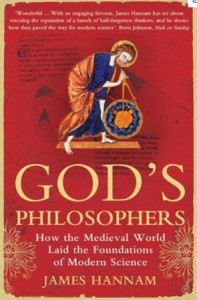 It’s a myth (turned cliche) that science and faith have always been at odds. The book, God’s Philosophers: How the Medieval World Laid the Foundations of Modern Science by James Hannam, shows how the church supported the genesis of science. Medieval universities were church-sponsored and ‘natural philosophy’ (as science was called back then) was a core subject. European thinkers drew on ancient Greek and Islamic texts to develop scientific principles that we still use today. Hannam debunks the myth of the ‘Dark Ages’: for example, people knew the Earth was round; the Christian church did not routinely persecute scientists; there were many inventions, from clocks to spectacles; and early Islamic scientists discovered how the eye functions and invented surgical instruments. (Essay on Science and Soul).
It’s a myth (turned cliche) that science and faith have always been at odds. The book, God’s Philosophers: How the Medieval World Laid the Foundations of Modern Science by James Hannam, shows how the church supported the genesis of science. Medieval universities were church-sponsored and ‘natural philosophy’ (as science was called back then) was a core subject. European thinkers drew on ancient Greek and Islamic texts to develop scientific principles that we still use today. Hannam debunks the myth of the ‘Dark Ages’: for example, people knew the Earth was round; the Christian church did not routinely persecute scientists; there were many inventions, from clocks to spectacles; and early Islamic scientists discovered how the eye functions and invented surgical instruments. (Essay on Science and Soul).
Tags: books, reviews, science
Posted in Book Reviews, Science | No Comments »
Sunday, May 10th, 2015
Antoine de Saint-Exupéry (1940) is best loved for his exquisite fable The Little Prince, but he also wrote one of the greatest true adventures, Wind, Sand and Stars (1940), an exciting poetic, philosophical memoir. Saint-Exupéry’s flights in the 1920s and 30s took him across the Pyrenees, Andes, and the Sahara in a tiny plane that would sometimes conk-out “with a great rattle like the crash of crockery.” There are remarkable descriptions of flying among waterspouts in a typhoon and his survival after a crash in the desert (which inspired The Little Prince).
In the sky a thousand stars are magnetized, and I lie glued by the swing of the planet to the sand. A different weight brings me back to myself…Behind all seen things lies something vaster; everything is but a path, a portal or a window opening on something other than itself.
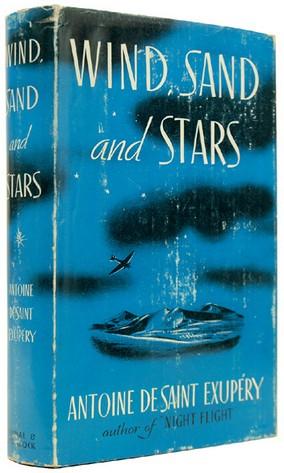
Tags: books, reviews
Posted in Book Reviews | 3 Comments »
Sunday, February 8th, 2015
One evening, a Sufi stopped by the roadside to read a book. He lit a bright lamp then walked some distance away and lit a small candle. He sat by the candle and read. People passing by asked, “Why don’t you read by the lamp?” The Sufi replied, “The bright lamp attracts all the moths. Here I can read my book in peace.” (Adapted from A Perfumed Scorpion by Idries Shah)
Blockbuster books attract many readers, but I’m attracted by books that are almost forgotten. Here are a few favourite hidden gems:
- Till We Have Faces by C. S. Lewis retells the myth of Cupid and Psyche; and which Lewis called “far and away the best of my books.”
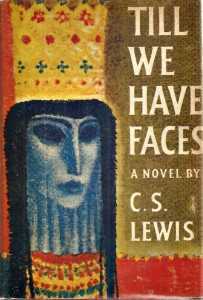
- Catastrophe, the strange stories of Dino Buzzati – a brilliant collection of surreal stories.
- Daydreamer by Ian McEwan – imaginative stories about a boy who daydreams to cope with growing up.
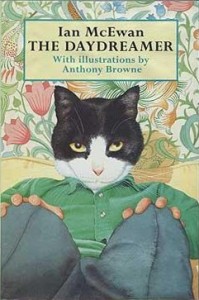
- The Importance of Living, by Lin Yutang – thoughts on everything by a Chinese writer and inventor
- Drift by William Mayne – survival story about a North American Indian girl and a white boy.
Tags: books, Reading, reviews
Posted in Book Reviews | No Comments »
Sunday, February 1st, 2015
A Bee in a Cathedral by Joel Levy is a fascinating book of science analogies and astonishing numbers. Suitable for all ages, only the physics section is a bit complex. A few of my favourites factoids:
- Every day 1 million meteoroids strike the Earth
- How far to the nearest star, Proxima Centauri? Travelling in a rocket at 250,000km/h, it would take you 18,000 years
- Most of the living cells in your body are less than a month old
- About 50 million neutrinos are passing through you now
- Every molecule in a glass of water is changing partners billions of times a second.
- How hard does your heart pump blood? Empty a bathtub in 15 minutes using only a teacup —repeat this without stopping for the rest of your life
- If an atom were blown up to the size of a cathedral, the nucleus would be no larger than a bee buzzing about in the centre.
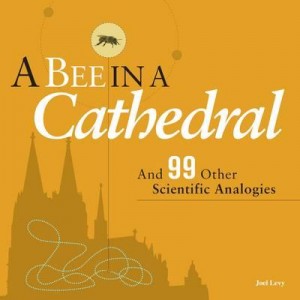
Tags: books, honey bees, reviews, science
Posted in Bees, Book Reviews, Science | No Comments »
Sunday, January 4th, 2015
The book has long oscillated between being accepted as harmless hilarity and being condemned as excessively horrifying- Humphrey Carpenter
Struwwelpeter (Pretty Stories and Funny Pictures) by Dr Heinrich Hoffman (1845) is a classic of gleefully gruesome cautionary rhymes about naughty children. Hoffman was a psychiatrist who founded an influential Frankfurt asylum and pioneered counselling as an alternative treatment to cold baths. The characters in Struwwelpeter were inspired by his child patients – he’d tell them stories and draw pictures to calm them down. Hoffman was looking for a book for his three year old son and could only find ‘stupid collections of pictures, and moralising stories’, so he created Struwwelpeter. It was one of the first picture books designed purely to please children – before 1850 children’s books were mainly religious and moral lessons with titles such as An Exact Account of the Conversion, Holy Lives and Joyful Deaths of Several Young Children. Read more about ‘Shock-Headed’ Peter here.
The Awful Warning carried to the point where Awe topples over into helpless laughter.– Harvey Darton
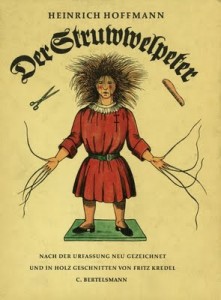
Tags: children's books, picture books, reviews, struwwelpeter
Posted in Book Reviews, Children's Books, Humour, Reading | No Comments »
Saturday, December 6th, 2014
There is great exuberance in the Moomins, and a delightful battyness. – Jeanette Winterson
The Moomin comic strips by Tove Jansson (originally from the 1950s) are reprinted in five magnificent hardback volumes. The comics are a lovely balance of humour and optimistism. The free-spirited Moomins live in the moment and these comics are still relevant, commenting on consumerism, the environment and work. For example, in The Conscientious Moomins, an officer of the League of Duty admonishes Moominpappa for being a drop-out; but when Moominpappa joins the establishment, all the pleasure goes out of his life, and he returns to his old philosophy of
‘Live in peace, plant potatoes and dream!’
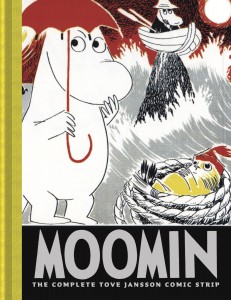
Tags: children's books, comics, moomins, reviews
Posted in Book Reviews, Children's Books, Humour, Peace | No Comments »
Tuesday, April 22nd, 2014
‘There are moments, Jeeves, when one asks oneself, “Do trousers matter?”’
‘The mood will pass, sir.’
P.G. Wodehouse (WOOD-house) created a world without earthquakes, wars or dictators (except Roderick Spode whose ‘eye that could open an oyster at sixty paces’); where nothing mattered, except tidy trousers, and nothing broke, except engagements. He was a brilliant writer who cooked up similes like a master chef:
His legs wobbled like asparagus stalks.
She looked like a tomato struggling for self-expression.
Her face was shining like the seat of a bus-driver’s trousers.
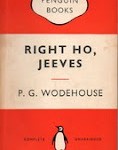 Wodehouse published 90 books, writing until his death at 93 years. When asked about his technique he said ‘I just sit at a typewriter and curse a bit’. All his books make me happy, but my favourite is Right Ho, Jeeves, about Bertie Wooster and his valet, Jeeves, who is ‘so dashed competent in every respect’. The chapter where Gussie Fink-Nottle presents the prizes at a private school is a great example of slow-building comedy.
Wodehouse published 90 books, writing until his death at 93 years. When asked about his technique he said ‘I just sit at a typewriter and curse a bit’. All his books make me happy, but my favourite is Right Ho, Jeeves, about Bertie Wooster and his valet, Jeeves, who is ‘so dashed competent in every respect’. The chapter where Gussie Fink-Nottle presents the prizes at a private school is a great example of slow-building comedy.
The sheer joy of stories which offer a world where things come right.– Sophie Ratcliffe (Wodehouse, Letters)
Read Stephen Fry’s tribute to P.G. Wodehouse.
Tags: books, humour, reviews, writers
Posted in Book Reviews, Humour, Writing | No Comments »
Friday, March 28th, 2014
This is a wonderful collection for children aged 8-12… Museums are hives of story, both real and imagined. These 22 authors have created new stories surrounding some intriguing objects from Te Papa Museum… Raymond Huber writes one of the most memorable stories in the collection, of a unique breed of humans who mature into insects (a highly original allegory). – Sarah Forster
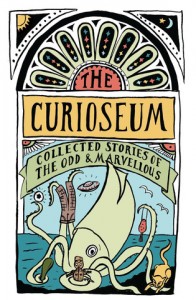
Tags: children's books, reviews
Posted in Book Reviews, Children's Books | No Comments »
Monday, December 23rd, 2013
A book whose small, huge work is the healing of the divisions between the child state and the adult state; of a child-sized truth about how things connect. – Ali Smith
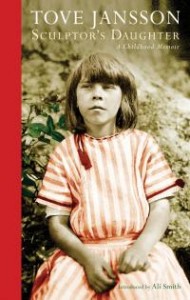 The Christmas present I couldn’t resist opening early: Sculptor’s Daughter by Tove Jansson is a beautifully written childhood memoir that reads more like short stories. Jansson was the creator of the charming Moomin books had a Moomin-like family: affectionate, creative, and liberal. Her parents were well known Finnish artists: her father a sculptor, her mother an illustrator. She spent much of her childhood on the Pellinki islands in the Gulf of Finland. This new edition of the 1968 book is an exquisite little hardback.
The Christmas present I couldn’t resist opening early: Sculptor’s Daughter by Tove Jansson is a beautifully written childhood memoir that reads more like short stories. Jansson was the creator of the charming Moomin books had a Moomin-like family: affectionate, creative, and liberal. Her parents were well known Finnish artists: her father a sculptor, her mother an illustrator. She spent much of her childhood on the Pellinki islands in the Gulf of Finland. This new edition of the 1968 book is an exquisite little hardback.
Tags: books, moomins, reviews, writers
Posted in Book Reviews | No Comments »
Monday, November 18th, 2013
Children’s fiction about honey bees is rare and this gem from 1957 is hard to find. A Swarm in June by Rosemary Garland is a charming junior novel that beautifully combines bee lore with childhood wonder. Seven year old Jonathan finds a wild swarm in June (‘worth a silver spoon’) but a visiting cousin is scared of bees. It takes an attack by a stoat to unite the cousins in the end. It’s an innocent tale and the bee wisdom is timeless: beating a gong to attract a swarm; tracking bees with thistledown; and ‘telling the bees’ about important events in our lives. Best of all is the way the boy is so comfortable around the bees. 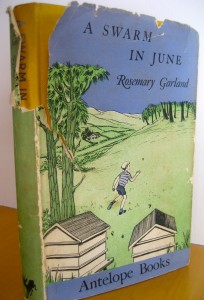
Tags: children's books, honey bees, reviews
Posted in Bees, Book Reviews, Children's Books | 1 Comment »
Thursday, October 17th, 2013
Honey, Nature’s Golden Healer by Gloria Havenhand is a superb book that deftly balances bee science, beekeeping expertise, folklore and health tips. Honey is more than just another spread for your toast:
‘Most people know very little about honey and its healing powers… Research has shown honey deserves to move into the serious league for healing.’
I thought I knew every fascinating fact about honey but I found many new insights here:
- Beeswax is made by bees only 10 to 18 days old who consume about 10 kg of honey to make 1 kg of wax.
- A little honey before bedtime fuels the brain overnight because the live stores the sugar (fructose).
- Raw honey is best to eat. Most supermarket honey is treated which removes vitamins, anti-bacterials and pollen nutrients.
- Always scrape out the honey jar – that last 1/10 of teaspoon represents the honey collected by one bee in her entire lifetime.
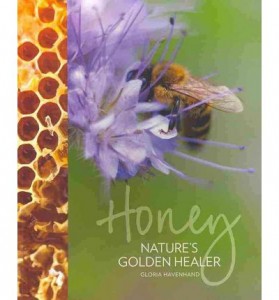
Tags: books, honey bees, reviews
Posted in Bees, Book Reviews | No Comments »
Sunday, August 11th, 2013
There’s a real tenderness and occasional profundity stitched into them. – Helen Brown (Telegraph)
It shouldn’t work but it does. Classic novels including War and Peace, Pride and Prejudice and Oliver Twist as board books for babies. Each book is cleverly condensed into twelve words suitable for very young children. The secret is in the charming photographs which tell the story with hand-made felt dolls posed in famous scenes from the novels (not the gruesome bits). The books are simple, funny and will appeal to adults as much as children. The series is Cozy Classics.
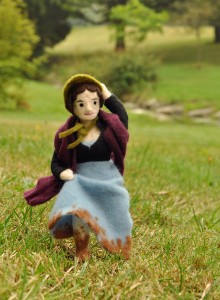 Picture 1: Elizabeth Bennett gets muddy on the way to Netherfield.
Picture 1: Elizabeth Bennett gets muddy on the way to Netherfield.
Picture 2: Andrei and Natasha dance; Pierre is jealous.
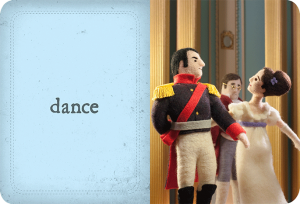
Tags: books, children's books, reviews
Posted in Book Reviews, Children's Books | No Comments »
Thursday, August 1st, 2013
This handsome, respectful volume deserves a place on the shelf … it succeeds in accurately dramatizing honeybee behavior. – Kirkus Reviews
Flight of the Honey Bee review by artist, Claire Beynon:
“Given the state of our environment, the sooner we introduce our children to bees – to their intelligence, their intricate behaviour and increasing vulnerability – the better. Flight of the Honey Bee is the perfect book to do this, combining as it does Raymond Huber’s careful language and well-researched text with Brian Lovelock’s meticulously observed paintings. Cleverly formatted, fiction and non-fiction – story and fact – are woven together as two discreet yet interconnected strands: young readers can choose their flight path.
Exquisite to look at and a pleasure to explore.
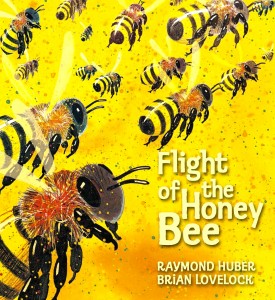 Scout the bee – named after the feisty protagonist in Harper Lee’s To Kill A Mockingbird – and her tightly-knit community of hardworking bees demonstrate these small creatures’ importance in the pollinaton of plants and the well-being of our planet. Flight of the Honey Bee is about bee behavior but it will also teach children about subtler things; wonder, beauty, the value of group functioning and collaborative effort, reproduction, risk, courage, the joys of flight – those rhythms and principles essential for any thriving community. The hum of the parts.
Scout the bee – named after the feisty protagonist in Harper Lee’s To Kill A Mockingbird – and her tightly-knit community of hardworking bees demonstrate these small creatures’ importance in the pollinaton of plants and the well-being of our planet. Flight of the Honey Bee is about bee behavior but it will also teach children about subtler things; wonder, beauty, the value of group functioning and collaborative effort, reproduction, risk, courage, the joys of flight – those rhythms and principles essential for any thriving community. The hum of the parts.
This book has all the essentials of a satisfying story: it asks questions and it informs. It invites observation and participation. There’s drama. Suspense. Conflict. Danger. Hope. And a happy ending. At the close of her adventure, Scout is a wily-er bee than she was when she set out from her hive on her first nectar-seeking adventure. As all characters must, she grows through her experiences. We come to care about her and her safe passage home.
Visually, Flight of the Honey Bee is exquisite to look at and a pleasure to explore – each double page spread is as stunning as the one preceding it. It will be immediately appealing to young readers. I was struck by how beautifully integrated the text and images are; they belong together like honey and honeycomb. The language is tender and witty (the line about ‘sun-powder’ is a wonderful change from ‘gun-powder’); and the paintings – a combination of watercolour, acrylic ink and coloured pencils – are spectacular; compositionally bold, delicate, exuberant and information-rich. Looking at them through my adult eyes, I can’t help thinking about fractals, the mathematics inherent in nature, the ever-present background dialogue between shape and sound, pattern and colour. Children will pore over them. And they will love Scout for her feisty resourcefulness.
More Flight of the Honey Bee reviews.
Tags: children's books, picture books, reviews
Posted in Bees, Book Reviews, Children's Books | No Comments »
Wednesday, May 15th, 2013
Here are three of my favourite New Zealand picture books that give children a manageable dose of horror. Gavin Bishop’s Horror of Hickory Bay has grown on me over the years. The story of a bland family on a Canterbury beach and an amorphous beast seemed a bit coarse to me 25 years ago, but now I love the earthy monster (which has a new force in quakey times). Diane Hebley said it best:
I find this book fascinating for its masterly use of colour and design, its grim humour, its coherence of idea, text and image, and for its acceptance of the dreamworld reality.
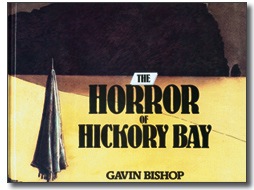
The Were-Nana by Melinda Szymanik is a creepy delight about a visiting relative who might just be a monster. The suspense is nicely built up and the double surprise ending (true to horror traditions) is brilliant. Odd cover choice but fine shadowy illustrations by Sarah Nelisiwe Anderson.
Te Kapo the Taniwha by Queen Rikihana-Hyland is out of print but was always popular in class. It’s the story of a half-man, half-monster who was given the job of shaping the South Island. Zac Waipara’s pictures are stunning as usual.
Tags: children's books, picture books, reviews
Posted in Book Reviews, Children's Books | No Comments »




















 It’s a myth (turned cliche) that science and faith have always been at odds. The book, God’s Philosophers: How the Medieval World Laid the Foundations of Modern Science by James Hannam, shows how the church supported the genesis of science. Medieval universities were church-sponsored and ‘natural philosophy’ (as science was called back then) was a core subject. European thinkers drew on ancient Greek and Islamic texts to develop scientific principles that we still use today. Hannam debunks the myth of the ‘Dark Ages’: for example, people knew the Earth was round; the Christian church did not routinely persecute scientists; there were many inventions, from clocks to spectacles; and early Islamic scientists discovered how the eye functions and invented surgical instruments. (
It’s a myth (turned cliche) that science and faith have always been at odds. The book, God’s Philosophers: How the Medieval World Laid the Foundations of Modern Science by James Hannam, shows how the church supported the genesis of science. Medieval universities were church-sponsored and ‘natural philosophy’ (as science was called back then) was a core subject. European thinkers drew on ancient Greek and Islamic texts to develop scientific principles that we still use today. Hannam debunks the myth of the ‘Dark Ages’: for example, people knew the Earth was round; the Christian church did not routinely persecute scientists; there were many inventions, from clocks to spectacles; and early Islamic scientists discovered how the eye functions and invented surgical instruments. (













